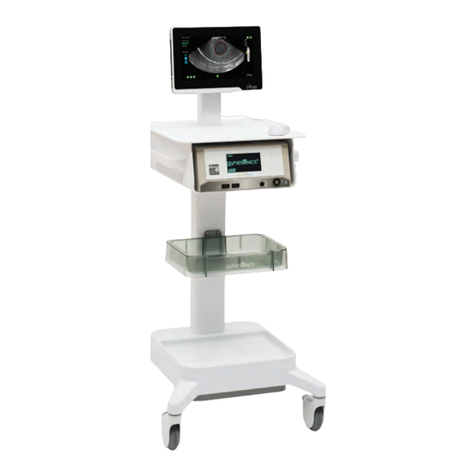LS 06311-002US Rev A
Notice
Sonata® System 2.1 and Sonata System 2.2 Service Manual
© 2021 Gynesonics, Inc. All Rights Reserved
The Sonata System and accessories, including the associated hardware, software, and Intrauterine
Ultrasound Probe, is owned by Gynesonics®, Inc. and is protected by the United States copyright
laws and international treaty provisions. This manual may not be copied in whole or in part or
reproduced without the written permission of Gynesonics, Inc. Copying includes translation into
another language and transferring into other media. Permitted copies must carry the same
proprietary and copyright notices as were affixed to the original under the law. Please note that
while every effort has been made to ensure that the information in this document is accurate, the
instructions, photos, figures, illustrations, tables, specifications, and schematics contained herein are
subject to change without notice. If you have any questions regarding the appropriate use of this
device or concerning any safety or operating instructions described in this manual, or for additional
copies of this manual, please contact your local Gynesonics Representative or the service
department of Gynesonics at:
Gynesonics, Inc.
600 Chesapeake Drive
Redwood City, CA 94063 USA
Telephone: +1-650-216-3860
Fax: +1-650-299-1566
www.gynesonics.com
Trademark and Patent Information
Gynesonics, Sonata, and the logo forms of the foregoing are trademarks and registered trademarks
of Gynesonics, Inc. All other trademarks are properties of their respective owners. Gynesonics
products are covered by US and foreign patents. See www.Gynesonics.com/patents.
About this Instruction Manual
This Manual covers the routine inspections and checks that may be performed of the Sonata System.
Refer to the Sonata System 2.1 or Sonata System 2.2 Instructions for Use with Technical Appendix for
detailed information regarding the Sonata System. Contact Gynesonics for additional copies of this
manual, any additional questions or support required for training and service, including installation,
and maintenance.
Manual originally issued in English.




























